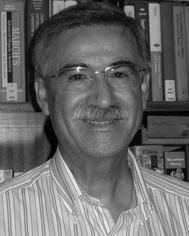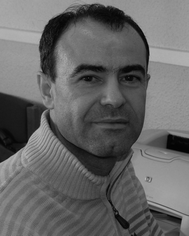Progress in allene chemistry
Benito
Alcaide
a and
Pedro
Almendros
b
aGrupo de Lactamas y Heterociclos Bioactivos, Departamento de Química Orgánica, Unidad Asociada al CSIC, Facultad de Química, Universidad Complutense de Madrid, 28040-Madrid, Spain. E-mail: alcaideb@quim.ucm.es; Fax: +34 91-3944103
bInstituto de Química Orgánica General, IQOG-CSIC, Juan de la Cierva 3, 28006-Madrid, Spain. E-mail: Palmendros@iqog.csic.es; Fax: +34 91-5644853
During the last three decades the chemistry of allenes has fascinated scientists worldwide. Thus, its beauty has been recognized in a diversity of allenic natural products, many of them showing interesting or promising therapeutic activities. In fact, around 150 natural products containing an allenic or cumulenic structure have been identified. In the meantime, the reactivity of allenes has been studied showing novel interesting patterns where chemo-, regio- and diastereoselectivity issues have been addressed. Cycloaddition, cross-coupling and cycloisomerization reactions, among others, have been studied affording a huge collection of structures. As long as allenes are showing us their reactivity, many strategies deal with the synthesis of allenic derivatives.
The main goal of this themed issue is to provide a multidisciplinary view of the chameleonic allene moiety – from synthesis, structure, and reactivity, to properties. It will also highlight the key centre-to-axis chirality transfer used in many processes. The objective of this issue is to bring together contributions from a significant group of high quality chemists in order to integrate concepts in allene chemistry and to act as a reference for scientists in the area. The issue combines tutorial reviews with review articles to illustrate the versatility of the cumulated diene system of allenes.
The ease of synthesis and the exceptional reactivity of alkoxyallenes has led to their use in a large number of highly diverse applications. Tius (DOI: 10.1039/C3CS60333D) describes their use in various versions of the allene ether Nazarov cyclization. Some applications of the methodology to natural products total synthesis have been included so as to provide the reader with benchmarks with which to judge the utility of the methodology. In their tutorial review (DOI: 10.1039/C3CS60429B), Reissig and Zimmer survey the use of alkoxyallenes as building blocks for organic synthesis, demonstrating the tremendous versatility of lithiated alkoxyallenes as precursors to valuable heterocyclic building blocks for such efforts as natural product synthesis.
The addition of nucleophiles to allenes catalysed by transition-metals is a powerful tool for the synthesis of functionalised molecules containing heteroatoms. Thus, heterocycles or allyl derivatives can be obtained depending on the reaction version, intramolecular or intermolecular, respectively. Muzart and Le Bras (DOI: 10.1039/C3CS60379B) summarise recent advances in palladium-catalysed inter- and intramolecular formation of C–O bonds from allenes. The review is limited to OH groups and includes all reactions for which at least a C–O is formed from compounds having an allenyl unit. Muñoz (DOI: 10.1039/C3CS60408J) reviews silver and platinum-catalysed additions of O–H and N–H bonds to allenes. Although platinum has been less explored than silver, different reactivity has been observed with platinum, showing the great potential and versatility of this methodology. Most of the examples describe the intramolecular version, but some intermolecular reactions with platinum have also been covered.
There is a growing interest in the study of the reactivity of bis(allenes) inspired by the chemistry developed in simple allenes. Alcaide, Almendros and Aragoncillo (DOI: 10.1039/C3CS60462D) discuss the synthesis and reactivity of non-conjugated bis(allenes) as well as the synthetic potential to obtain a large amount of different structures, mainly polycarbo(hetero)cycles.
The Pauson–Khand reaction is a formal [2+2+1] cycloaddition involving an alkene, an alkyne and carbon monoxide. In place of the usual alkene, allene reagents are fascinating substrates in the Pauson–Khand-type reaction because of their unique reactivity and the synthetic use of the final products. Mukai, Kitagaki, and Inagaki (DOI: 10.1039/C3CS60382B) provide insights into the origin and progress in the allenic [2+2+1] cyclocarbonylation, including the chirality transfer of the allene and synthetic applications.
Soriano and Fernández (DOI: 10.1039/C3CS60457H) provide an outlook on the application of computational/theoretical methods to the wide and rich chemistry of allenes. Special emphasis is placed on the interplay and synergy between experimental and computational methodologies, rather than on recent developments in methods and algorithms. The contents of this review span from the most fundamental studies on the equilibrium structure and chirality of allenes to recent advances in the study of complex reaction mechanisms involving allene derivatives in organic and organometallic chemistry.
The review by Schomaker and co-workers (DOI: 10.1039/C3CS60416K) focuses on the conversion of allenes to strained three-membered methylene heterocycles and their subsequent reactivities. Specifically, Schomaker, Adams, Weatherly, and Burke report recent progress in the synthesis and reactivity of aziridines, allene oxides/spirodiepoxides, silacyclopropanes, phosphiranes, and thiiranes, including applications to the preparation of complex molecules.
Homogeneous gold catalysis has always been dominated by alkynes as substrates. Although significant knowledge about gold-catalysed conversions of allenes has been obtained too, these contributions are scattered in the literature. Mechanistic insights into the gold chemistry of allenes are summarized in the tutorial review by Hashmi and Yang (DOI: 10.1039/C3CS60441A) taking advantage of computational studies, labelling studies, the detection of intermediates, chirality transfer and diastereoselective product formation.
Despite that molecules composed of a contiguous sequence of double bonds, the [n]cumulenes, share structural similarities to both of their conjugated relatives, the polyenes and polyynes, their properties are quite different. Tykwinski and Januszewski (DOI: 10.1039/C4CS00022F) introduce synthetic achievements and reactivities of long [n]cumulenes (n ≥ 5), as well as a description of the physical and electronic structures.
The possibilities offered to chemists using complementary modes of catalysis should emphasize advantages and limitations of each synthetic approach, thereby providing the means to expand the scope of this powerful methodology. The tutorial review by Malacria, Maestri, Rodriguez, Truscott and Cañeque (DOI: 10.1039/C4CS00023D) summarizes recent examples of electrophilic activation of allenenes and allenynes with particular focus on analogies and differences between Lewis and Brønsted acid activation of these versatile substrates.
The review by Mascareñas and López (DOI: 10.1039/C4CS00024B) focuses on the developments of catalytic [4+2] and [4+3] cycloadditions of allenes. The different methodologies for assembling six- and seven-membered cyclic systems have been classified depending on the type of key reactive intermediate that was proposed in the catalytic cycle.
Kwon, Wang, and Xu (DOI: 10.1039/C4CS00054D) review the nucleophilic phosphine catalysed reaction between allenes and electrophiles, which has been established as one of the most powerful and straightforward synthetic strategies to generate highly functionalized carbocycles or heterocycles. The authors explained how the reaction topologies can be controlled by a proper choice of the phosphine catalysts and the structural variations of starting materials.
Several planned articles fell by the wayside during the preparation of this issue. The review articles: “Methods for the synthesis of allenes”, “Electrophilic additions to allenes”, “Oxidative cyclizations of enallenes”, “Palladium-catalysed cascade reaction of allenes”, “Reactivity of vinylidenecyclopropanes”, and “Allenamides as useful building blocks in organic synthesis”, could not be included. Fortunately, this themed issue covers a wide array of topics that highlight the importance and diversity of allene chemistry. We hope that readers will enjoy the contents and find it beneficial to their research and teaching ventures.
Last but not least, the guest editors wish to thank the contributors for their generous efforts and outstanding contributions, as well as the staff of Chemical Society Reviews for their help and collaboration.
| This journal is © The Royal Society of Chemistry 2014 |


